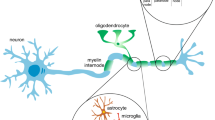Abstract.
The C1q family is characterized by a C-terminal conserved global C1q domain, which is structurally very similar to the tumor necrosis factor homology domain. Although some C1q family members are expressed in the central nervous system, their functions have not been well characterized. Cbln1, a member of the Cbln subfamily of the C1q family, is predominantly expressed in cerebellar granule cells. Interestingly, Cbln1 was recently shown to play two unique roles at excitatory synapses formed between cerebellar granule cells and Purkinje cells: the formation and stabilization of synaptic contact, and the control of functional synaptic plasticity by regulating the postsynaptic endocytosis pathway. Since other Cbln subfamily members, Cbln2–Cbln4, are expressed in various regions of developing and mature brains, Cbln subfamily proteins may generally serve as a new class of transneuronal regulators of synapse development and synaptic plasticity in various brain regions.
Similar content being viewed by others
Author information
Authors and Affiliations
Corresponding author
Additional information
Received 3 December 2007; received after revision 5 January 2008; accepted 8 January 2008
Rights and permissions
About this article
Cite this article
Yuzaki, M. Cbln and C1q family proteins – New transneuronal cytokines. Cell. Mol. Life Sci. 65, 1698–1705 (2008). https://doi.org/10.1007/s00018-008-7550-3
Published:
Issue Date:
DOI: https://doi.org/10.1007/s00018-008-7550-3




